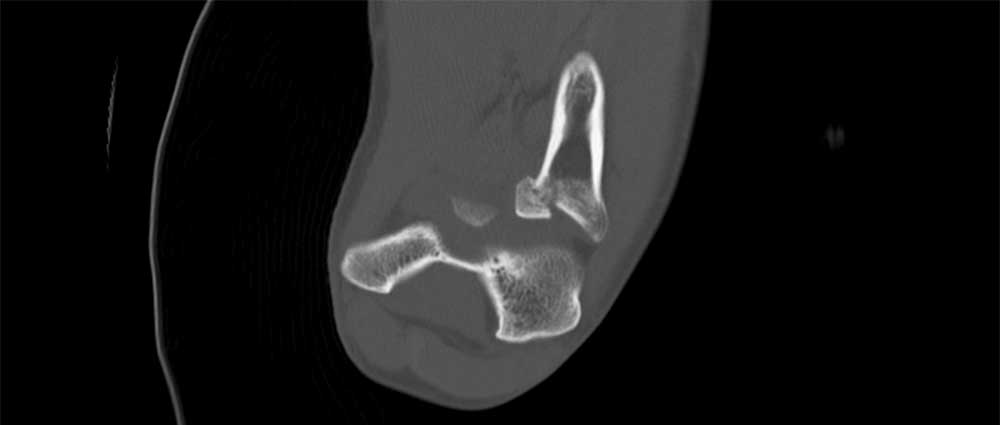The radial head is the rounded expansion of the radius bone (on the outside part of the forearm) that articulates with / rubs against the capitellum of the humerus to make the radio-humeral joint.
Radial head fractures are common, accounting for 1 in 5 of all elbow fractures. Usually the person falls on an outstretched hand with their hand twisted to the ground but they can result from a fall directly onto the elbow as well. They are more frequent in women than in men and occur most often between 30 and 40 years of age.
Approximately 10 percent of all elbow dislocations involve a fracture of the radial head. Radial head fractures are less common from falling directly on the elbow. The fracture may not be visible on initial X-rays, but can usually be seen if the X-ray is taken a week or two after the injury. Most fractures can be treated without surgery but better results are definitely achieved with internal fixation of the more complex injuries.
The annular ligament surrounds the radial head and keeps the fragments in place which is why a plaster cast is not usually needed to treat radial head fractures. A sling is usually worn for comfort for a week or two but it can take 3 months for the pain to settle completely. Fractures that are in more than one piece or are displaced or depressed are usually fixed with an operation. If the joint is in too many pieces to fix a radial head replacement will be considered.

Approximately 10 percent of all elbow dislocations involve a fracture of the radial head. Radial head fractures are less common from falling directly on the elbow. The fracture may not be visible on initial X-rays, but can usually be seen if the X-ray is taken a week or two after the injury. Most fractures can be treated without surgery but better results are definitely achieved with internal fixation of the more complex injuries.
The annular ligament surrounds the radial head and keeps the fragments in place which is why a plaster cast is not usually needed to treat radial head fractures. A sling is usually worn for comfort for a week or two but it can take 3 months for the pain to settle completely. Fractures that are in more than one piece or are displaced or depressed are usually fixed with an operation. If the joint is in too many pieces to fix a radial head replacement will be considered.
Radial head fractures are often associated with ligament injuries around the elbow and forearm. Combined surgery is often required to fix these complex soft tissue injuries as well as the bone fracture.
Problems can occur because of damage to the joint lining surface at the time of the injury which lead to arthritis or with stiffness or instability from the soft tissue injuries. Not all of these are amenable to further surgical correction.
Some fractures are too complex to allow reconstruction of the bone. In these cases the radial head may be replaced with a metal component (ideally with a low friction articulating surface such as Pyrocarbon) which allows the elbow to remain stable and the soft tissues to remain balanced. The results of this procedure are often quite gratifying initially but can deteriorate with time.
Simple radial head fractures may result in a small loss of motion of the elbow but otherwise usually heal uneventfully.



